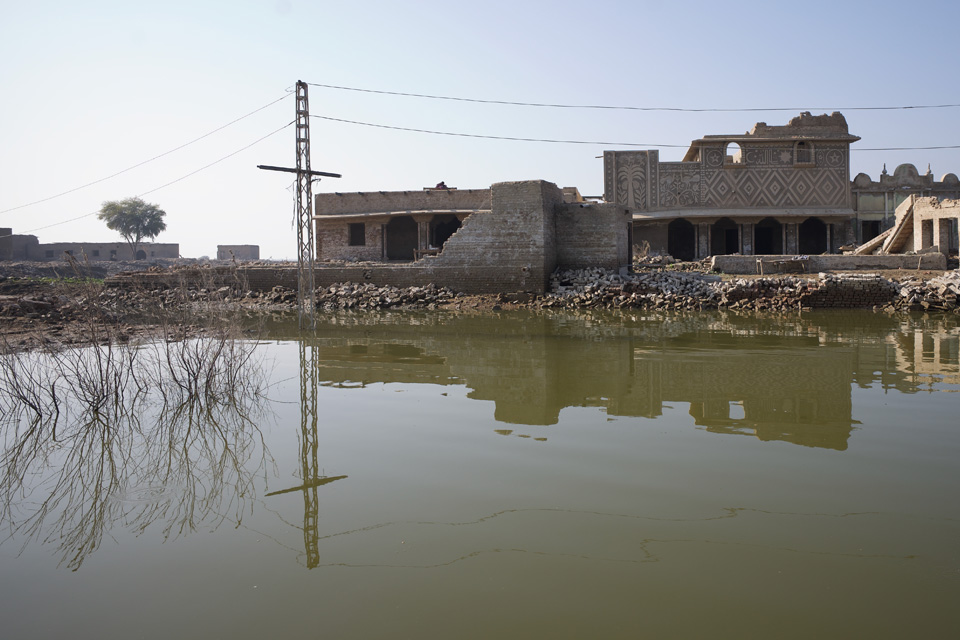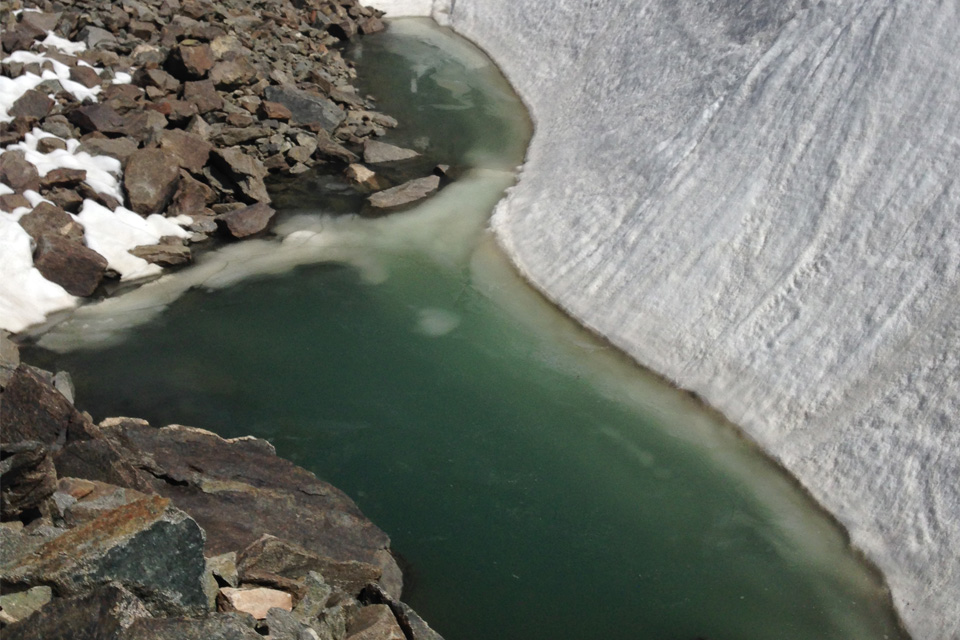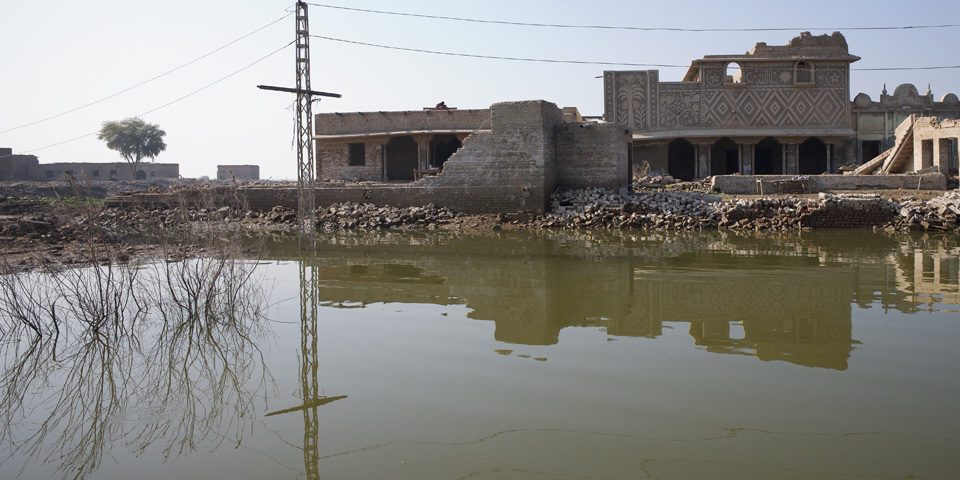Incoherent climate and security policies in South Asia will leave more people exposed to climate risks.

Countries in South Asia are being hard hit by the climate crisis. In this guest post, Usman Ali examines how Pakistan and India’s security choices are leading to increasing military spending and emissions, while undermining human and environmental security.
Introduction
The climate crisis is contributing to extreme weather, including heatwaves, droughts and flooding in South Asia. These trends are affecting India and Pakistan; both have faced floods whose losses are expected to reach billions of dollars, and both countries are paying a heavy price for historical emissions they were not responsible for.
Today, Pakistan contributes around 0.9% of global GHG emissions and, while India at 8% is now the third largest global emitter after China and the US, its per capita emissions remain comparatively low. Both countries spend billions on their militaries each year, but the scale of their military emissions has received relatively little scrutiny. As Pakistan’s military is deeply involved in many sectors of its economy, it makes determining its carbon footprint complex.
Both countries are nuclear powers, and both are entwined in an arms race, fanning tensions that spilled over into conflict earlier this year. Since 1998, this new nuclear security competition has diverted huge sums of public money into procuring military technologies. Pakistan spends around 2.2% of its GDP on its military, around $9 billion annually, which is justified on the basis of perceived Indian aggression. Meanwhile, India will spend $78 billion this year, an increase of 9.5%, although a quarter of this will be spent on military pensions.
South Asia’s environmental challenges
The climate crisis is severely impacting South Asia, and its people, with Pakistan among its most vulnerable countries. Its 2022 floods affected almost 33 million people, and it has also seen climate-induced migration, heatwaves, and glacial lake outburst floods. In India, recent flooding displaced more than 300,000 people in the Punjab, its agricultural hub, devastating livelihoods.

Both countries are dependent on the Himalayas and on their mountain glaciers, which are the largest outside the polar regions. However, its glaciers are also rapidly melting, resulting in the emergence of thousands of glacial lakes, some of which pose downstream flood risks. The loss of mountain glaciers will impact water availability across both countries. The Indian Ocean is growing warmer every year, threatening fisheries and shifting weather patterns. Meanwhile, increasing temperatures across the region are expected to negatively impact a wide range of sectors, ecosystems and human health.
Regional militarisation in a changing climate
Despite the climate crisis and the growing environmental uncertainty, the role of the military is increasing across South Asia. It is a trend that risks securitising environmental policies in the region. Globally, militaries are increasingly being called upon to respond to environmental and climate disasters and, while this pattern is also evident in India and Pakistan, some scholars argue that it can provide militaries with a licence to further degrade the environment. Traditional climate security framing, which views climate change as a “threat multiplier” and as a national security threat, situates it within the logic of risk and places policy responses within the security establishment, particularly in Pakistan.
India’s and Pakistan’s security dilemma, growing nationalism, and recent military clashes have helped expand or legitimise the use of force, and encourage those who argue for militarised solutions to civilian matters. This includes environmental and climate policies. Pakistan’s main disaster mitigation authority has been run by a serving general; in India, nearly 9,000 people have faced sedition charges after opposing a nuclear plant in Tamil Nadu; meanwhile, India’s recent suspension of the Indus Water Treaty placed millions of people at risk from famine.
The “threat multiplier” framing was primarily developed with a US audience in mind; its reception and impact may be quite different in states like Pakistan, where the military enjoys particular influence on national policy.
Environmental and opportunity costs
In May this year, the region witnessed one of the largest aerial battles in decades as 110 fighter jets faced off against one another. Notoriously carbon-intensive, the training and deployment of jet aircraft make air forces highly polluting. But military GHG emissions are just one pathway for environmental damage. Alongside emissions, peacetime military activities can cause substantial disruption and damage to habitats, even as military spending diverts resources from all three pillars of sustainable development, as well as from climate action.
Between 2016-20 Pakistan was a leading arms-importing country, responsible for 2.7% of global imports. India, meanwhile, imported 9.5% of global arms during the same period. Pakistan has pledged to reduce its annual GHG emissions by 20% by 2030, and argues that it requires $40-50 billion annually in climate finance to respond to growing climate risks. The country spends $23 billion annually on debt servicing, but nevertheless decided to hike its defence budget by 20% this year.
Acute policy incoherence like this not only results in larger militaries, which contribute more to the climate crisis, but by diverting spending, it also leaves communities in both countries more exposed to climate risks of increasing frequency and severity.
Conclusion
South Asian climate security is perceived through the lens of nuclear competition, risk logic and militarism. Security institutions play a particularly prominent role in national policy-making, encouraging securitisation, detracting from genuine solutions and wider societal needs, and reducing the potential for transboundary cooperation. At times this backfires, as was the case with the isolated responses to this year’s monsoon floods in the Indus basin, whose impact on people and infrastructure could have been reduced through better cross-border coordination. This lack of policy coherence is perhaps most evident in the disconnect between military spending and climate finance, where regional competition is driving up military emissions even as it diverts urgently needed resources from adaptation efforts.
Usman Zulfiqar Ali is a Research Fellow Intern at the Policy Research Institute for South Asia (PRISA) and is interested in demilitarisation and climate change. He holds an MA in International Relations and Security Studies from the University of Bradford, UK. Doug Weir contributed to this post.





